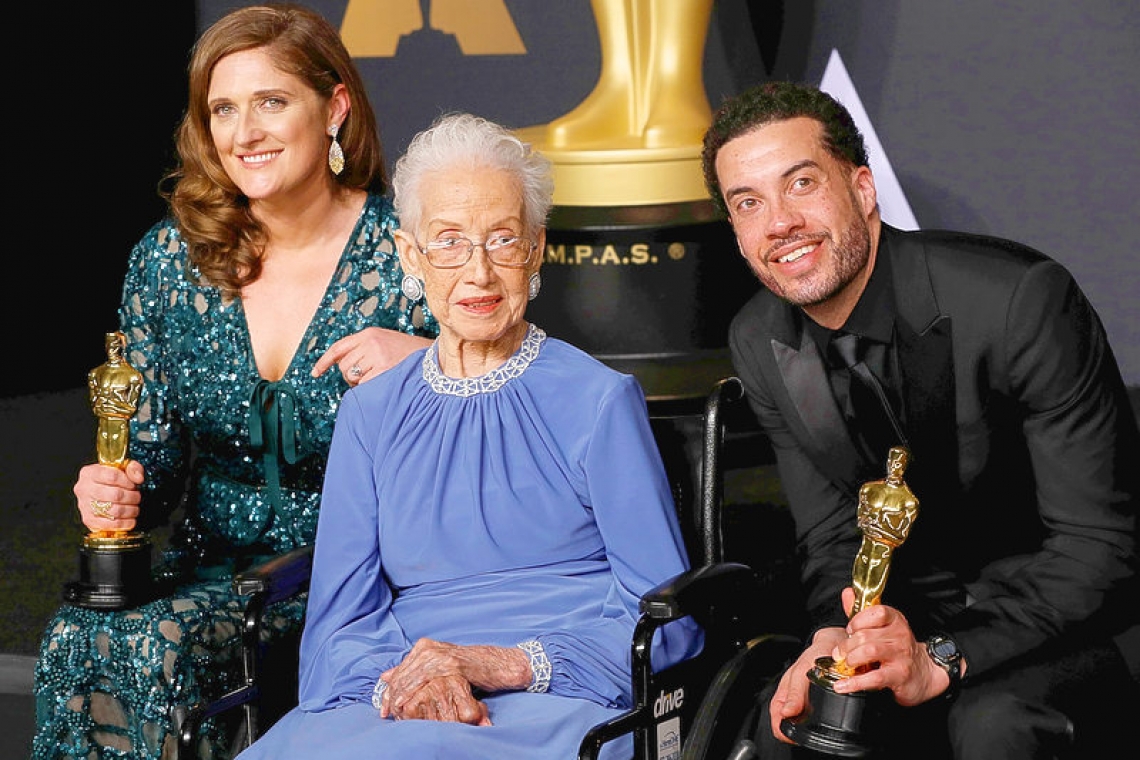HOUSTON--Katherine Johnson, the black woman whose mathematical genius took her from a behind-the-scenes job in a segregated NASA as portrayed in the film "Hidden Figures" to a key role in sending humans to the moon, died on Monday at the age of 101, NASA said.
"Our NASA family is sad to learn the news that Katherine Johnson passed away this morning at 101 years old," NASA Administrator Jim Bridenstine posted to Twitter. "She was an American hero and her pioneering legacy will never be forgotten."
Johnson was awarded a Presidential Medal of Freedom by former President Barack Obama in 2015 and in 2016 he cited her in his State of the Union Address as an example of America's spirit of discovery. "She's one of the greatest minds ever to grace our agency or our country," then NASA Administrator Charles Bolden said when Johnson was presented the presidential medal.
In 2016, NASA named a research facility for Johnson in her hometown of Hampton, Virginia, and a year later her alma mater, West Virginia State, marked her 100th birthday in August 2018 by establishing a scholarship in her name and erecting a statue.
Johnson and her black colleagues at the fledgling NASA were known as "computers" when that term was used not for a programmed electronic device but for a person who did computations. They were little known to the public for decades but gained overdue recognition when the book "Hidden Figures" was published and the 2016 Oscar-nominated movie hit the screens. Johnson attended the 2017 Oscars ceremony, joining the film's cast in presenting an award for documentaries, and was given a standing ovation.
Johnson had a groundbreaking career of 33 years with the space agency, working on the Mercury and Apollo missions, including the first moon landing in 1969, and the early years of the space shuttle program. Astronaut John Glenn thought so much of her that he insisted Johnson be consulted before his historic earth-orbiting flight in 1962.
"Get the girl to check the numbers," he said.
"He knew I had done (the calculations) before for him and they trusted my work," Johnson told the Washington Post in 2017.
During the space race between the United States and the former Soviet Union that began in the late 1950s, Johnson and her co-workers ran the numbers for unmanned rocket launches, test flights and airplane safety studies using pencils, slide rules and mechanical calculating machines. But they did their work in facilities separate from white workers and were required to use separate restrooms and dining facilities.
Johnson always said she was too busy with her work to be concerned with racism. "She didn't close her eyes to the racism that existed," Margot Lee Shetterly wrote in "Hidden Figures." "She knew just as well as any other black person the tax levied upon them because of their colour. But she didn't feel it in the same way. She wished it away, willed it out of existence inasmuch as her daily life was concerned."







